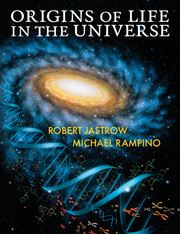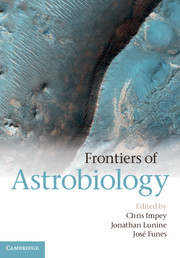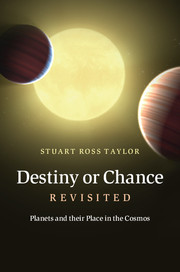Origins of Life in the Universe
This concise and beautifully illustrated book traces the evolution of the Cosmos from the Big Bang to the development of intelligent life on Earth, conveying clear science in an engaging narrative. By mapping the history of the Universe for introductory science and astrobiology course for non-science majors, this book explores many of the most fascinating questions in science. What is the origin of the Universe? How do stars and planets form? How does life begin? How did intelligence arise? Are we alone in the Cosmos? Physics, chemistry, biology, astronomy and geology are combined to create a chronicle of events in which the swirling vapors in the primordial cloud of the Universe evolved over billions of years into conscious life.
Features:
•The most fascinating questions on the history of the Universe are answered in this text for one-semester introductory science courses.<br>
•The strong narrative and exciting color images of this incredible story will motivate non-science students to develop an understanding of science and life on Earth <br>
•Explains science in a way that isn’t overwhelming for non-science majors.<br>
•Questions for the student prompt critical thinking.<br>
•Combines astronomy, geology and biology to give a broad introduction to these sciences for non-science students.<br>
•Coverage of the latest discoveries in astrobiology conveys the excitement of this fast-moving field.<br>
- Addresses some of the most fascinating questions in the history of human kind: How did Life begin? Are we alone in the Cosmos?
- The strong narrative and exciting images of this incredible story will motivate non-science students to develop an understanding of science and life on Earth
- Combines astronomy, geology and biology to give a broad introduction to these sciences for non-science students
Reviews & endorsements
“Extraordinarily well written, a very pleasant learning experience for me … Jastrow and Rampino have written a remarkable text that should be read by all undergraduates who require a science distributive.”
Edward Berger, Dartmouth College
“This book is a great introduction to the grand journey of 14 billion years of cosmic evolution from the Big Bang to human evolution! It presents a sweeping synthesis of the sciences ranging from astronomy and astrophysics to planetology, geology, climatology, evolution of life and molecular biology and makes an original and exciting text for a general introductory science course for non-science majors.”
Vivien Gornitz, NASA Goddard Institute for Space Studies
“Jastrow and Rampino have managed a tour-de-force, from the origin of the universe to the emergence of life on Earth and the search for extraterrestrial intelligence. Their book makes engaging reading and provides an excellent first overview of this subject for non-specialists.”
Christian Koeberl, University of Vienna
"... a comprehensive look at astrobiology in an accessible, well-written text aimed at undergraduate students who do not pursue science as a principal subject. ... Its completeness in the book's strength. No aspect relating to the origins of life is left uncovered ... this book gives an extremely comprehensive understanding of the evolution of life and the possibility for life beyond our own planet, and it should serve as an excellent textbook for an introductory astrobiology course."
Ellen Stofan, Nature Geosciences
"...the text is descriptive and requires no mathematical skills. ...As is typical of Jastrow's books, this one is very clearly written and very well illustrated. ...Highly recommended."
A. Spero, CHOICE
"… a great book … beautifully illustrated … breaks new ground … it is a book which, for the first time, allows a general reader to grasp the wonders of our Universe and of life at a deeper and more logical level."
Contemporary Physics
Product details
December 2008Paperback
9780521532839
444 pages
246 × 190 × 28 mm
1.13kg
245 colour illus.
Available
Table of Contents
- Part I. The Universe:
- 1. Our place in the Universe
- 2. A view of the origin of the Universe
- 3. Life from the cosmic cauldron
- Part II. The Solar System:
- 4. Formation of the conditions for life
- 5. Origins of a habitable planet
- 6. Prospects for life
- 7. The evolution of a hostile world
- Part III. The Earth:
- 8. Composition and structure of a habitable planet
- 9. The changing face of an active habitable planet
- 10. Climate change and the evolution of life
- Part IV. Origin and History of Life on the Earth:
- 11. The origin and evolution of life
- 12. The early history of life on Earth
- 13. The development of higher life forms
- Part V. Evolution of Intelligent Life:
- 14. The mammals and the rise of intelligence
- 15. The evolution of higher intelligence
- 16. Are we alone in the Universe?
- Epilogue. Are we alone?
- Appendices.






